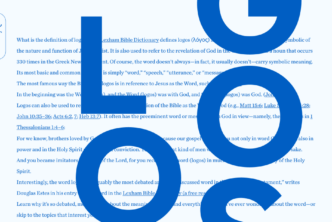You do and you don’t need Hebrew to understand the Old Testament.
You don’t, because the Bible has already been translated into English.
You do, because there are different levels of understanding: There’s your certified mechanic and your weekend warrior; there’s your freshman and there’s your professor.
There are insights available to any reader of English Bible translations, and there are certain biblical insights available only to those who have some level of Hebrew knowledge. No one should be embarrassed or discouraged by this fact.
If you want those biblical insights—if you want wisdom like hidden treasure (Prov. 2:3–5)—then you should shoot for at least some familiarity with Hebrew. I suggest starting with the simplest and perhaps most important: finding and defining Hebrew lemmas, or dictionary forms. Logos is designed to help you make this an important and consistent part of your Bible study.
Want to learn how to find and define Hebrew words? Watch this quick Logos Pro tutorial:
Michael Heiser has recently (and somewhat provocatively) suggested that beginning Hebrew students should avoid using lexicons. I fully agree with him. But the danger he has in mind is primarily so-called “theological” words—words like בְּרֵאשִׁית (bereshith, “beginning”) in Genesis 1, or ἀγάπη (agape, “love”) in 1 Corinthians 13. You’re probably safe looking up “earrings” in Judges 8; it’s unlikely that you’ll be led astray regarding such a prosaic and straightforward word. A quick check of the lexicon is more likely to send you to significant cross-references than anything else.
And that’s what the search in the video did: it enabled you to find an interesting and instructive parallel in the biblical text. It’s one you might possibly have remembered on your own, or one you might have read about in a commentary—or might not have. That’s the point of spending a little effort digging into other uses of a given Hebrew term. There are hidden treasures to be found.
Resources to continue your study
- The Platinum base package includes key Hebrew texts and datasets, including the Lexham Hebrew Bible (LHB), a special digital edition of the Hebrew text created to function with Logos Bible Software’s tools and datasets. The LHB is tied, of course, to Hebrew morphology—parsings of every single word in the text. With it, you can perform nearly any kind of word or grammatical search imaginable.
- BHS, Biblia Hebraica Stuttgartensia, is the standard critical Hebrew text. If you’re studying Hebrew, or have done so in the past, you’re more likely to keep it up if you have easy—and therefore regular—access to it. In my own experience, my honored Hebrew codex simply isn’t as easy to access and use as my digital Hebrew Bible.
- Learn to Do Word Studies is a course put together by linguistically trained experts, helping you avoid some of the pitfalls and fallacies common to biblical word studies—so you can find true gold and avoid the fool’s variety.
- If you’re going to use a lexicon, you might as well as use the best: The Hebrew and Aramaic Lexicon of the Old Testament (HALOT) is the current standard in biblical Hebrew lexicons. (You can also buy it bundled with the standard Greek lexicon, BDAG.)
***
If you’ve enjoyed the free training on the blog, visit the Logos Pro training page to get the most comprehensive Logos video tutorials available. Become a Logos Pro. Start your free training now!




